蓝精灵拍摄的钻石环
See Explanation. Clicking on the picture will download the highest resolution version available.
请参阅说明。单击图片将下载可用的最高分辨率版本。

See Explanation. Clicking on the picture will download the highest resolution version available.
请参阅说明。单击图片将下载可用的最高分辨率版本。
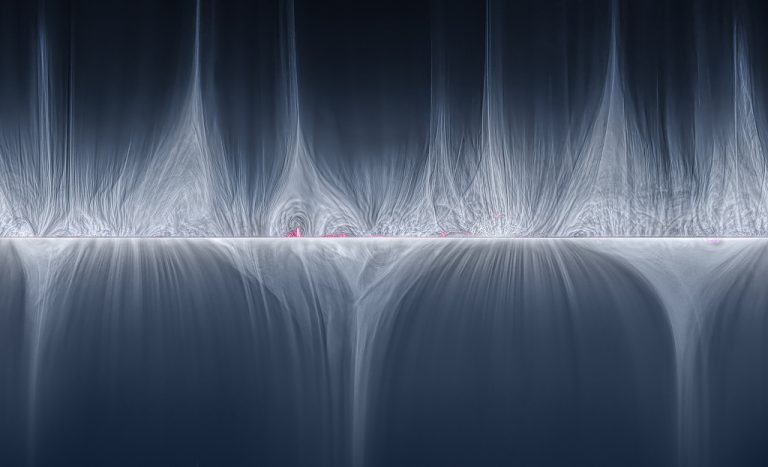
请参阅说明。单击图片将下载可用的最高分辨率版本。

2023年9月10日 An Annular Solar Eclipse over New Mexico Credit & Copyright: Colleen Pinski Explanation: What is this person doing? In 2012, an annular eclipse of the Sun was visible over a narrow path that crossed the northern Pacific Ocean and several western US states. In an annular solar eclipse, the Moon is too far from the Earth to block out the entire Sun, leaving the Sun peeking out over the Moon’s disk in a ring of fire. To capture this unusual solar event, an industrious photographer drove from Arizona to New Mexico to find just the right vista. After setting up and just as the eclipsed Sun was setting over a ridge about 0.5 kilometers away, a person unknowingly walked right into the shot. Although…
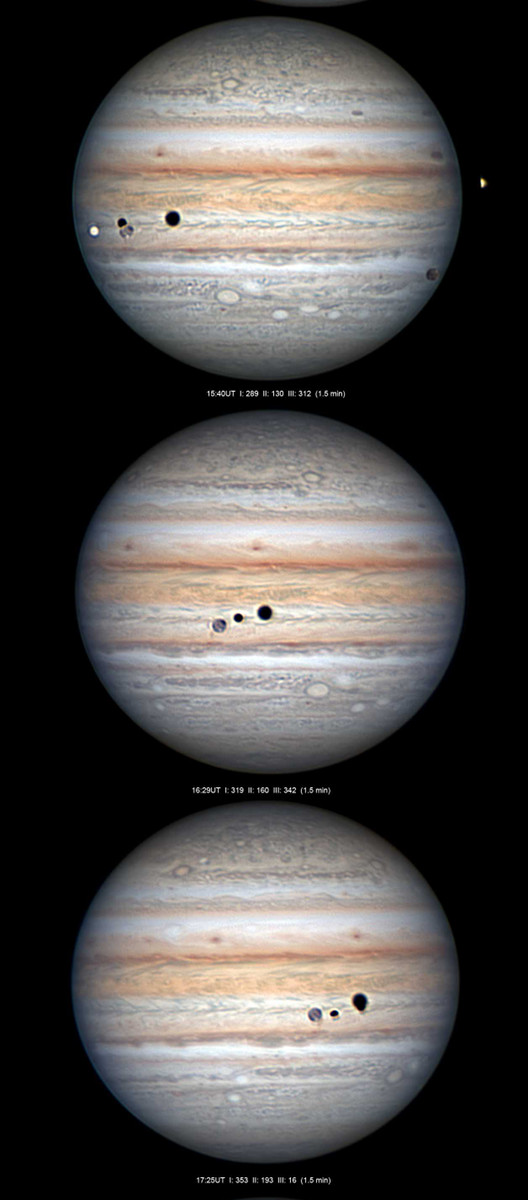
2021年8月21日 Triple Transit and Mutual Events Image Credit & Copyright: Christopher Go Explanation: These three panels feature the Solar System’s ruling gas giant Jupiter on August 15 as seen from Cebu City, Philippines, planet Earth. On that date the well-timed telescopic views detail some remarkable performances, transits and mutual events, by Jupiter’s Galilean moons. In the top panel, Io is just disappearing into Jupiter’s shadow at the far right, but the three other large Jovian moons appear against the planet’s banded disk. Brighter Europa and darker Ganymede are at the far left, also casting their two shadows on the gas giant’s cloud tops. Callisto is below and right near the planet’s edge, the three moons in a triple transit across the face of Jupiter. Moving…
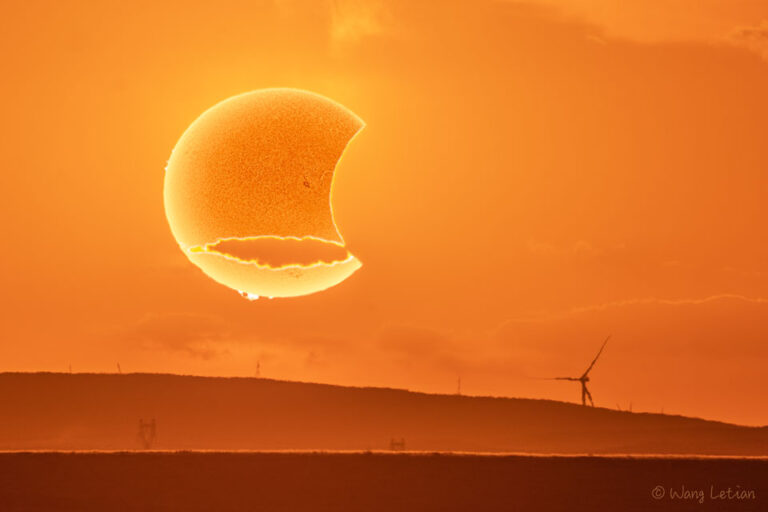
2021年06月28日 A Paper Moon Solar Eclipse Image Credit & Copyright: Wang Letian (Eyes at Night) Explanation: It may look like a paper Moon. Sailing past a canvas Sun. But those are not cardboard clouds. And it’s not make believe. The featured picture of an orange colored sky is real — a digital composite of two exposures of the solar eclipse that occurred earlier this month. The first exposure was taken with a regular telescope that captured an overexposed Sun and an underexposed Moon, while the second image was taken with a solar telescope that captured details of the chromosphere of the background Sun. The Sun’s canvas-like texture was brought up by imaging in a very specific shade of red emitted by hydrogen. Several prominences can…
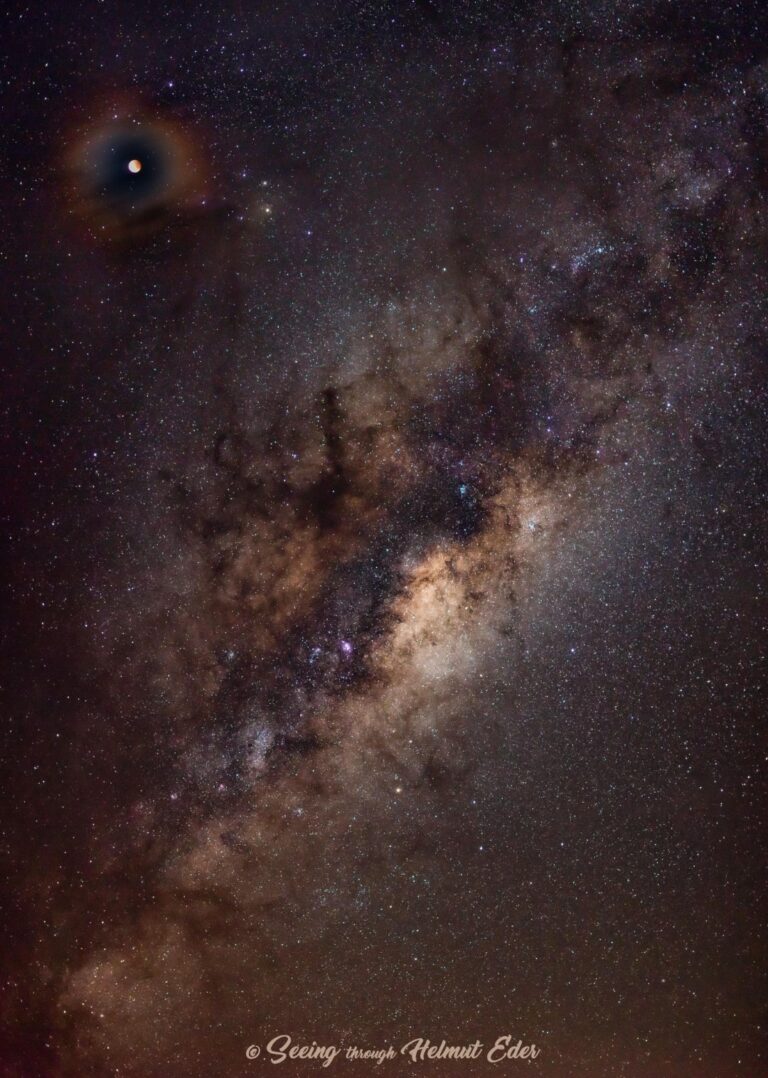
2021年06月09日 A Total Lunar Eclipse Corona Image Credit & Copyright: Helmut Eder Explanation: This moon appears multiply strange. This moon was a full moon, specifically called a Flower Moon at this time of the year. But that didn’t make it strange — full moons occur once a month (moon-th). This moon was a supermoon, meaning that it reached its full phase near its closest approach to the Earth in its slightly elliptical orbit. Somewhat strange, a supermoon appears a bit larger and brighter than the average full moon — and enables it to be called a Super Flower Moon. This moon was undergoing a total lunar eclipse. An eclipsed moon can look quite strange, being dark, unevenly lit, and, frequently, red — sometimes called blood…
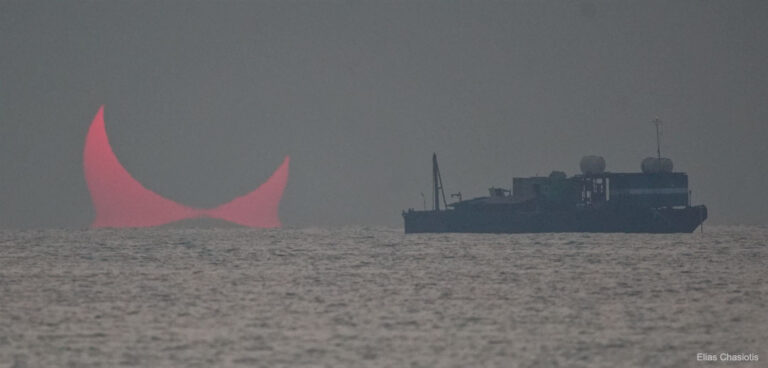
2021年06月06日 A Distorted Sunrise Eclipse Image Credit & Copyright: Elias Chasiotis Explanation: Yes, but have you ever seen a sunrise like this? Here, after initial cloudiness, the Sun appeared to rise in two pieces and during partial eclipse, causing the photographer to describe it as the most stunning sunrise of his life. The dark circle near the top of the atmospherically-reddened Sun is the Moon — but so is the dark peak just below it. This is because along the way, the Earth’s atmosphere had an inversion layer of unusually warm air which acted like a gigantic lens and created a second image. For a normal sunrise or sunset, this rare phenomenon of atmospheric optics is known as the Etruscan vase effect. The featured picture…
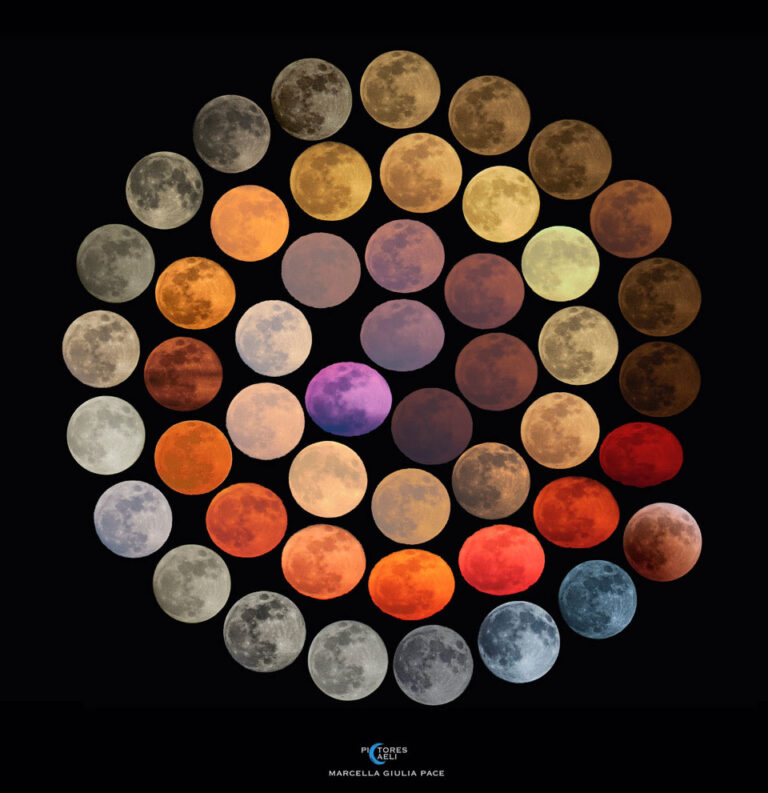
2020年11月11日 Colors of the Moon Image Credit & Copyright: Marcella Giulia Pace Explanation: What color is the Moon? It depends on the night. Outside of the Earth’s atmosphere, the dark Moon, which shines by reflected sunlight, appears a magnificently brown-tinged gray. Viewed from inside the Earth’s atmosphere, though, the moon can appear quite different. The featured image highlights a collection of apparent colors of the full moon documented by one astrophotographer over 10 years from different locations across Italy. A red or yellow colored moon usually indicates a moon seen near the horizon. There, some of the blue light has been scattered away by a long path through the Earth’s atmosphere, sometimes laden with fine dust. A blue-colored moon is more rare and can indicate…